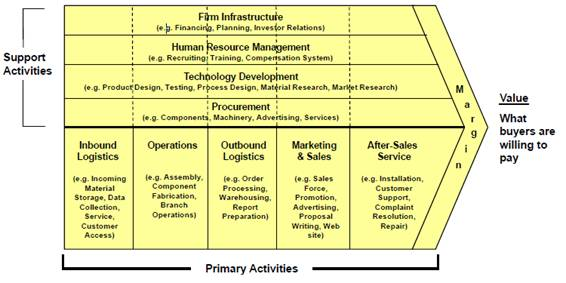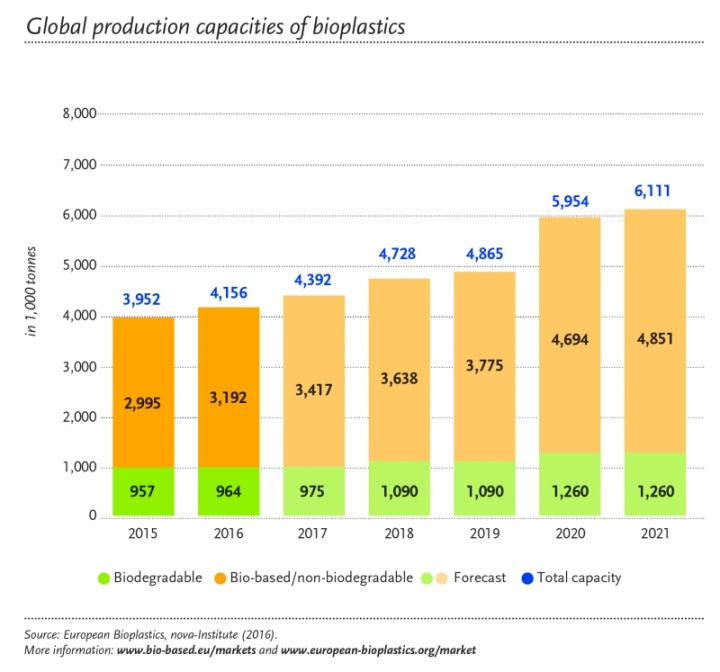BUS7B27 Implementing Strategy
Introduction
Unilever, a multinational British consumer goods company situated in London provides a wide range of products like foods, household things and many more. The company always focuses on the sustainability factor of both the customers and the environment. The overall strategic plan that Unilever can reduce their plastic usage is going to be described in this project. Plastic crates crisis all over the world and according to the statistics around 79% of landfilled and 35% of the sea has been affected by the plastic pollution. This project is going to address the overall strategic risk strategic goal and the strategy of implementation of the reduction of plastic within Unilever.
1: Plastic Reduction Strategy Proposition
In today’s business world the use of plastic is growing day by day in packaging and manufacturing. Unilever is a UK based multinational company that has a presence in almost 26 countries around the world. According to their website, they have used around 700,000 metric tons of plastic from around 2017. In this report, their plastic reduction strategy will be discussed.
1.1: Plastic Reduction Strategy
The company Unilever should stick to practical solutions to this problem 80% of their products uses some kind of plastic in packaging. So they cannot stop using plastic as a packing material. However, there are many steps we can take to reduce plastic pollution which will be discussed below
- According to Hobbs (2020), the first step forward can be reducing the amount of plastic used in the manufacturing and packaging process. This means replacing the plastic materials with paper or aluminum or glass materials.
- In those areas, Unilever, where plastic cannot be replaced the company can use higher quality plastics that are more biodegradable. Plastics thicker than 40 microns will be preferred if used instead of regular plastics which are not so biodegradable like this 40-micron plastic.
- According to Lieu et al. (2019), the company Unilever sells products of different varieties and they also have higher-end products with better profit margins with less profit margin products. With fewer profit margins in areas, they cannot replace plastic with some expensive items but in higher-margin products, they can replace cheap plastic with other materials. This will make their products eco friendly and take and use the strength in their marketing strategy.
- One of the best strategies to reduce plastic usage is strategies for more efficient production and delivery methods in which plastic waste is generated (Dmitrievna, 2021). An example of this will be using recycled plastics and recycling their plastics and using them over and over.
The result of using the strategies would be more efficient packaging and manufacturing which will reduce the plastic waste generated and also save money for Unilever (Refer to appendix 1). By using recycled plastic and replacing plastic with different materials they can create an image of an eco-friendly company that is quite popular among consumers so they have a better brand image.
1.2: Strategic Goals
To achieve any significant result in terms of plastic reduction the company, Unilever needs to have a clear and predefined goal. The goal should be aligned with their needs and also the resources available to comply with them. The strategic goals will be discussed below
- Reducing plastic
The most important goal for the company Unilever is to reduce plastic usage in Indian manufacturing and packaging plants. This will be a major goal for their plastic reduction strategy. This is going to help the company to invent their brand image as an eco-friendly brand that their consumers will like (Tamimi-Mariño, 2019). Today the discussion about global warming is a hot issue so every self-conscious consumer wants to contribute their portion in reducing plastic usage so if Unilever provides an eco-friendly option for their consumers it will be better for their sales.
Busing less wasteful processes
The second goal for the company Unilever is to use more efficient processes so that they can reduce plastic usage. The company cannot reach their goals of eco-friendly packaging and manufacturing until they start recycling the plastic waste produced by them. According to Prado Perez (2020) in internal studies, the company has found that 11% of their plastic is post-consumer plastics which mean they can be recycled and used over and over. Also, they can use more flexible and different materials for packaging like using different fibers for their sachets rather than plastics.
- Contributing to circular plastic economy
In 2018 around 250 packaging producers, brands and NGOs signed the new plastic economy global commitment. This pact was in line with the European plastic pact which was backed by the European Union. According to Phelan et al. (2022), as the company in Unilever operates from Britain and has a lot of consumers in the European Union they have to comply with the standards for the pact which makes them responsible to maintain the circular plastics economy full stop this means they have to recycle, reuse and refill their plastic products.
SMART model for the goals of the company Hindustan Unilever in plastic reduction strategy is discussed below
| Specific | Measurable | Achievable | Relevant | Time-Bound |
| The goals described in the report above are very specific in tackling the problems of plastic waste faced by the company (Schnurr et al. 2018). | The progress and result of the goals are measurable by very simple means like seeing the number of recycled plastics being used for tracking the plastic usage in products. | The goals mentioned in the
Report is very practical and can be achieved with technologies available in today’s market. |
The usage of higher quality plastics is mandatory in many countries and also the consumers want more eco-friendly brands so their goals are very relevant to the market. | The most important part is how much time it will take to replace the old system and introduce the newer one. The goals mentioned above are evil within a couple of months in every manufacturing sector around the world that Unilever has. |
Table 1: SMART objectives
(Source: created by the learner)
The company Unilever is an old company with experienced leaders so they will have ownership of the goals and resources. This transition will help the company reach its optimal performance as a corporation because there will be reusing and cutting costs by this plastic reduction strategy.
1.3: Strategic Statements
The mission of Unilever is to add vitality to life and the vision of the company is to make sustainable living commonplace. According to Abubakari and Thuranira (2021) achieve both the mission and vision the company set its goal to help approximately 1 billion people through which they can improve their well-being and health. Three new strategies have been taken into consideration to reduce the plastic usage of Unilever.
- Replace the plastic with other biodegradable products like aluminum or glass.
- Use thicker than 40 microns plastic instead of the usual plastic.
- Replace the plastic with paper, jute bags and others.
This new strategy helps to build a sustainable factor within the company which helps the company to achieve its vision and makes the company more sustainable towards the environment. According to Rhein and Sträterith (2021) the help of the strategy, the company can bring a new green change within their environment. These three strategies provide a long term factor through which companies can easily control their plastic usage and can achieve their objectives to help 1 billion people and can contribute to their well being. This strategy does not change their overall mission vision and objectives rather it helps to achieve a higher goal and create a long-term future opportunity.
1.4 Strategic Risks
The risks within the corporation are mentioned below
- The company Unilever has a huge customer base in developing third world countries where they sell their cheaper products. In this product packaging cannot be replaced with any other material than plastic because that will be more expensive this is a major concern for the company.
- The major impact of these bricks is that they may not want to replace plastic in products that will make their strategy less potent because it is a major chunk of their production line (Rasha, 2021).
- The best way to migrate the streaks is to use different fibers which are traditionally used in those specific places with plastic so that the packaging can be cheaper and acceptable to the local market.
1.5 Organizational Resources and capabilities
The organization developed a strategic plan to maintain the resources and capabilities that help it to implement a successful strategic plan to reduce the usage of plastic.
- Establish objectives that Unilever wanted to achieve within the time that is how it can maintain its capabilities.
- In the strategic plan, the resources are proper study about the plastic, biodegradable products like paper, glass, Aluminum foil, jute bag etc. To develop easy availability of the resources Unilever creates a sustainable supply chain.
- According to Krishnamoorthy (2021), to maintain and develop resources and capabilities, policies need to be addressed to cut down the hazards and create better performance.
- Proper management of human resources and procurement can provide a better understanding of the development of resources as well as the supply chain process of this strategic plan.
- The practical approaches of the strategic plan can be developed if the inbound and outbound logistics are managed properly.

Figure 1: Porter’s Value Analysis
The value chain analysis provides the accurate knowledge that these primary activities and support activities need to be performed accurately to maintain and develop proper resources and capabilities. According to Foschi (2021) porter’s value chain analysis provides both the internal activities and tunnel activities that helps to create a proper understanding of the impact of any strategy. Primary activities of Unilever like infrastructure, HR, technology and procurement are strong. The support activities like marketing sales services, inbound logistics and outbound logistics need to be focused more and that can provide a better scope towards the implementation of these strategic plans to reduce plastic usage.
Implementing the Strategy
| Strategic goals | Action steps | Who’s responsible | Timeframe | Resources | Impact on organization |
| The strategic goals for the company Unilever can be described in different parts.
1. The company has promised to cut down the usage of virgin plastics by half around 2025. 2. The number of virgin plastics used in packaging will be 25% recycled by the year 2025. 3. Their packaging will be more flexible and recyclable than it is now. They will also collect and recycle more plastics than they use in their products and packaging (Nadeem et al. 2018). |
The action steps needed to achieve this is as mentioned below
1. The important step Unilever can take is shifting their supplier from their current supplier to a new supplier who will provide them with composite materials which are more biodegradable and environment-friendly. The company can use waterproof natural fabrics rather than plastic ones to pack their products. 2. The future of manufacturing is to go green and environment friendly so any company that will invest in orthodox manufacturing techniques will gain more market share in future. The company is advised to invest in developing new manufacturing techniques. 3. One of the major points that the company considers is they need trained staff who will deal with their changed new system so they need to train their current staff to adapt with the new strategies of manufacturing. |
The responsibility of the work would be upon different departments of the company mentioned below
1. The head of operations to the company will be responsible for swift management of the transition. 2. According to Kpoku (2021) the operations will be under the regional and plant heads of the company. 3. The HR department will be responsible for the training and management of the staff. |
The goal is to reach the promises before 2025. It will take at least 3 months to 6 months to start implementing the new strategies (Englehardt, 2021). | 1. The supply chain contractors can help the company to make the transition towards green goals.
2. Head of the production team will have a major impact on the transition. 3. HR will be very important to train the staff’s un new environment. 4. Last but not least the system manager and technicians will play a major role in this.
|
1. The company will be producing less toxic materials from the manufacturing process.
2. They will now comply with new environmental standards made by the governments of different countries. 3. Unilever’s normal process may be disturbed by this transition.
|
Table 2: Implementation plan table
(Source: created by the learner)
Summary
Through this report, it has been found that Unilever used a large amount of plastic India packaging system, delivery system and other supply chain processes. However, it wants to create a sustainable green plastic-free environment within its company structure by cutting down the usage of plastic and this report includes the strategic plans that help to achieve Univeler’s goal. It has been found that Unilever is going to cut down on the usage of normal plastic by 2025 and replace all the non-biodegradable plastic with biodegradable plastic. It was a strategic supply chain process through which they can get those resources that help to implement this strategic plan. In this report, it has been included that Unilever creates a supply chain model and implements policies that help it to create a proper environment for its green revolution. The recommendation has provided the idea that Unilever achieves all its possibilities to create proper management and wants to replace all of their usage of plastic with biodegradable products. These strategic plans have been justified with the help of academic theory, porter’s value chain analysis that helps to create proper pathways towards the implementation process. In this report, the overall strategic plan including strategic risk and smart objectives have been defined the importance of this strategic plan towards the reduction programmed of plastic in Unilever.
Reference list
Abubakar, M. and Thuringia, B., 2021. The consumer goods sector and the sustainability agenda in Ghana: a review of sustainability commitments. Discover Sustainability, 2(1), pp.1-17.
Dmitrievna, K.K., 2021. Transformation of Business Sustainability Strategies of FMCG Companies in the 21st Century on the Examples of Unilever and L’Oréal.
Englehardt, E.E. and Pritchard, M.S., 2021. Tales of Greed and the Search for Remedies. In Everyday Greed: Analysis and Appraisal (pp. 25-41). Springer, Cham.
Foschi, E. and Bonoli, A., 2019. The commitment of packaging industry in the framework of the European strategy for plastics in a circular economy. Administrative Sciences, 9(1), p.18.
Hobbs, A., 2020. Analyzing Unilever’s Pledge to Cut Back on Plastics. SAGE Publications: SAGE Business Cases Originals.
Kpoku, O.K., 2021. Positive and negative influence of globalization on international business actors’ activity (on materials of Unilever Group) (Doctoral dissertation).
Lieu, P.T.H., Arunjit, N., Buapradabkul, S. and Nathaniel, D., Unilever Company Strategic Business Analysis.
Nadeem, S.P., Garza-Reyes, J.A. and Glanville, D., 2018. The challenges of the circular economy. In Contemporary Issues in Accounting (pp. 37-60). Palgrave Macmillan, Cham.
Phelan, A.A., Meissner, K., Humphrey, J. and Ross, H., 2022. Plastic pollution and packaging: Corporate commitments and actions from the food and beverage sector. Journal of Cleaner Production, 331, p.129827.
Prado Perez, S., 2020. Sustainability Discourse in the Fast-Moving Consumer Goods Sector–A comparison between Procter & Gamble and Unilever.
Rasha, A., 2021. Case 6: Integrated Sustainability: Unilever’s Sustainable Plan.
Rhein, S. and Sträter, K.F., 2021. Corporate self-commitments to mitigate the global plastic crisis: Recycling rather than reduction and reuse. Journal of Cleaner Production, 296, p.126571.
Schnurr, R.E., Alboiu, V., Chaudhary, M., Corbett, R.A., Quanz, M.E., Sankar, K., Srain, H.S., Thavarajah, V., Xanthos, D. and Walker, T.R., 2018. Reducing marine pollution from single-use plastics (SUPs): A review. Marine pollution bulletin, 137, pp.157-171.
Tamimi-Mariño, K., 2019. Legitimacy for firms’ sustainable practices on plastic.
Appendix
1. Result of using bio-degradable plastic

………………………………………………………………………………………………………………………..
Know more about Unique Submission’s other writing services:

